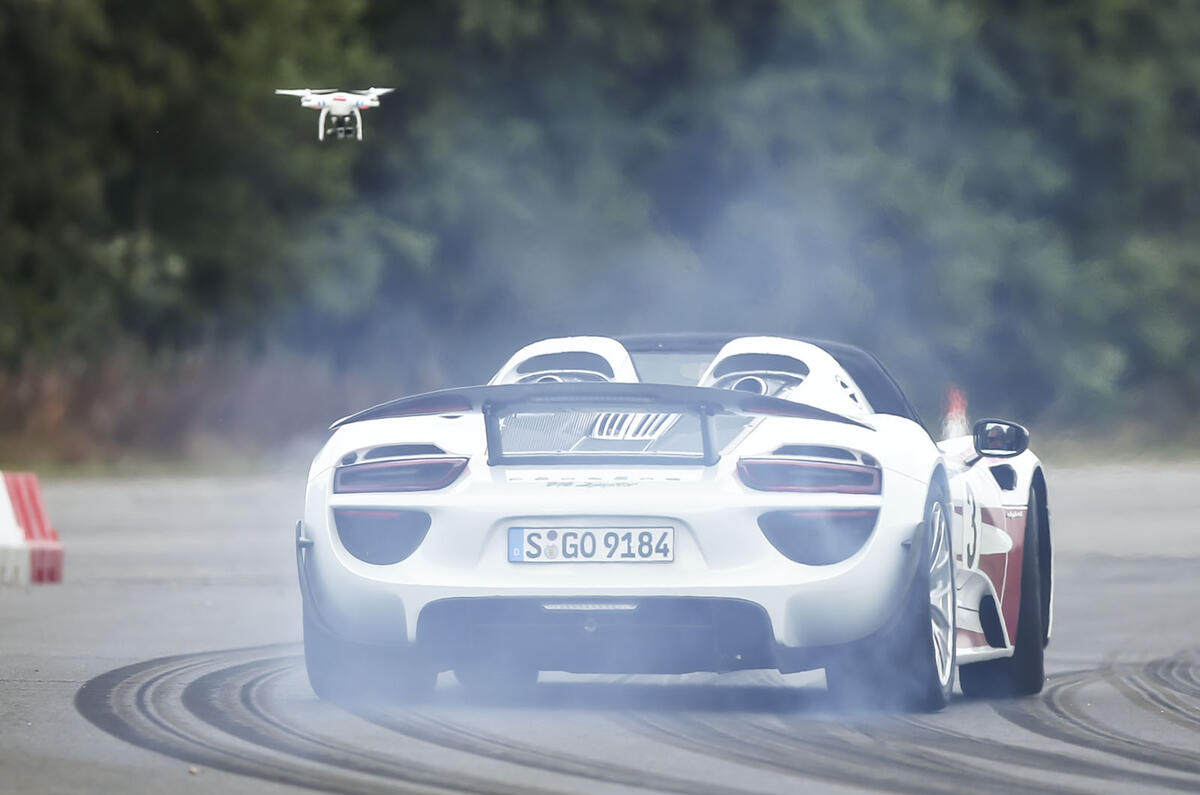The video we posted this time last week on the 200mph drag race between a McLaren P1, Porsche’s 918 Spyder and a Ducati 1199 Superleggera should, anytime now, surpass the one million views mark on our YouTube channel, about which we are quietly chuffed.
But it's also attracted an unusual amount of attention on this website, too, and one of the reasons why is because it contains a lot of footage shot from the air. Quite a few of you have asked us how, and on what, we shot the footage.
Well, we filmed it using a pair of dji Phantom 2 drones, one fitted with a GoPro camera, the other using dji's own Vision+ system that has an integrated camera that can be operated using a simple iPhone.
We’ve sourced ours through Crawley-based electronics specialist RCGeeks, who are top people to deal with. But if you do a Google search for ‘dji Phantom’ you'll find the company is all over the internet nowadays as well. Hence the reason why drones are in the news quite a lot at the moment.
Just yesterday, for instance, a senior UK air chief claimed on the front page of The Times that within 10 years drones will be “everywhere in the skies above our heads” helping to deliver anything from mail to personal gifts to anyone and everyone who buys stuff online.
At the moment, though, we’re more concerned with making our vids look better by shooting them with drones, and judging from your reaction to the McLaren P1 vs Porsche 918 vs Ducati 1199 Superleggera video, they seem to be having the desired effect. We also shot some of the best driver's car video using the same equipment, and hopefully you'll enjoy that, too.
The great thing about the drones we’re using is that they are reasonably easy to fly and don’t cost a silly amount to buy – between £1500 and £2500 depending what spec cameras are attached – and the results seem to speak for themselves. Which probably helps explain why dji has gone from being a two-man band in China just a few years ago to a company that employs more than 1300 people today.





Join the debate
Add your comment
Out of interest, Rilot, what
I did read something briefly about a drone being flown into a premiership football stadium recently, and that operator being in trouble with the CAA.
I did a 5k run recently and
@rilot Is it quite clear what constitutes the drones as being illegal? As in do you need a licence to fly model aeroplanes? I have no idea on the subject..
Fake Ferrari